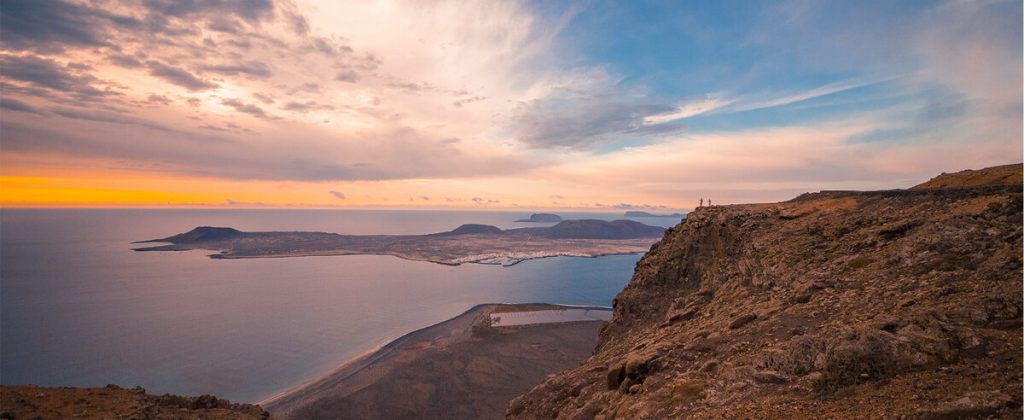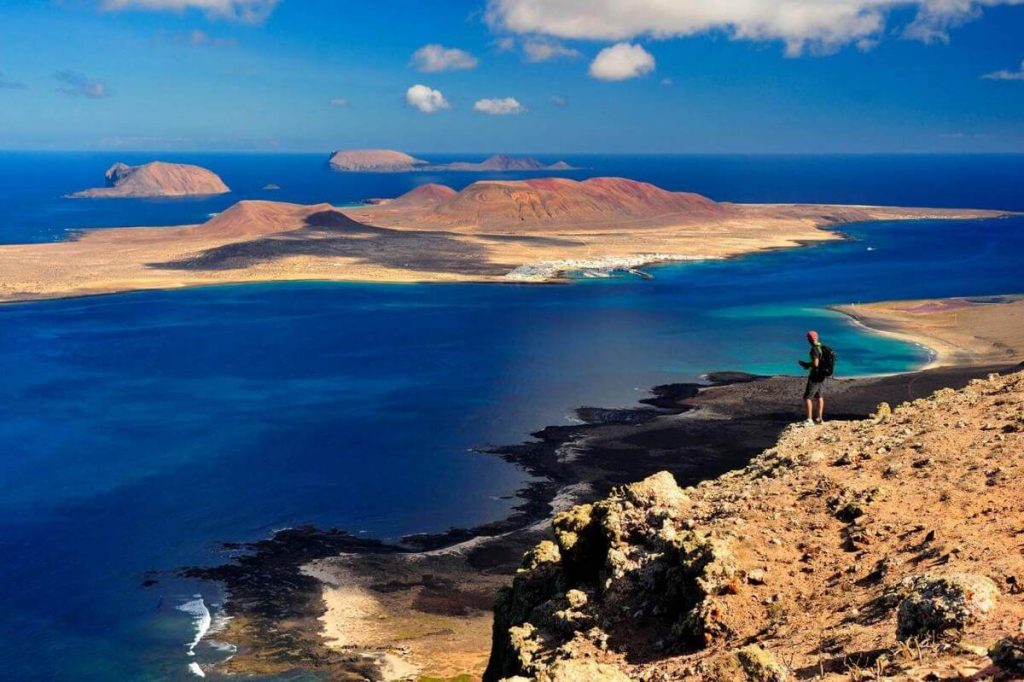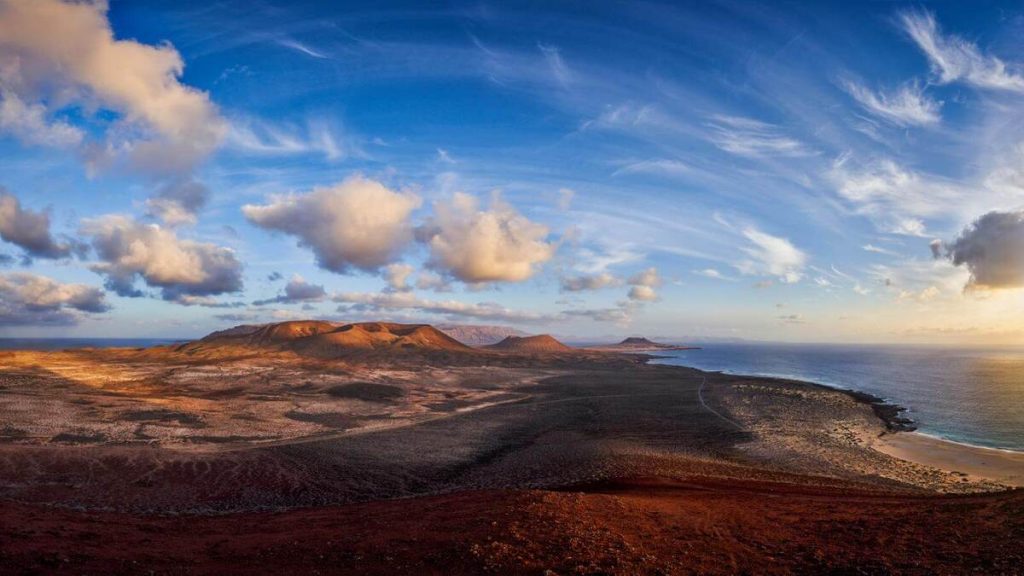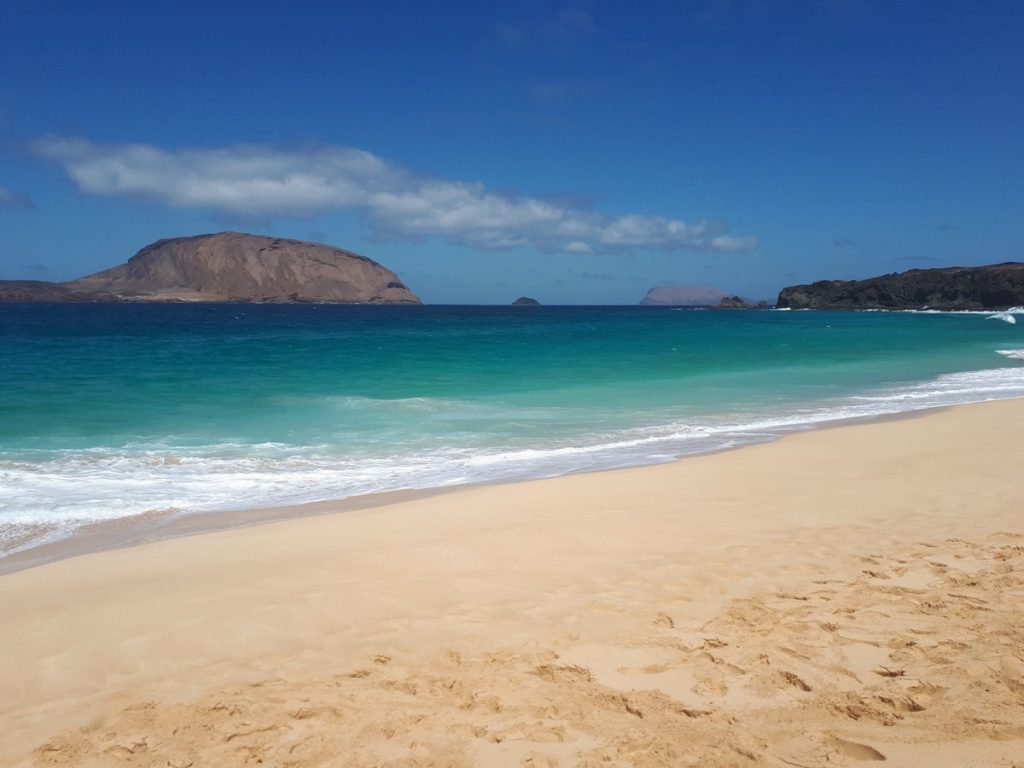Seven are the islands that make up the Canary Islands, or at least that is how it was considered until a few years ago. Already in 2018 the General Commission of the Autonomous Communities of the Senate approved the motion that recognizes La Graciosa as the eighth inhabited island in the region. And we put the focus precisely on this point because it is the largest of the islands and islets that make up the Chinijo archipelago, northwest of Lanzarote.

The Chinijo archipelago is a protected natural area of about 700 square kilometers that makes up the largest marine reserve in Europe. It is a small archipelago with an important environmental relevance, as it is a sanctuary for many birds. From Marca Canaria we want to tell you more about the Natural Park of the Chinijo Archipelago and all the activities you can do in it.
What is and where is the Chinijo archipelago?
Chinijo is a small archipelago anchored in a larger archipelago, the Canary Islands, which is made up of three islands and two islets. Of all these nuclei, only one, La Graciosa, is inhabited by humans. Of course, this island is the least populated of all the Canary Islands.
The archipelago is called "Chinijo" because in the Guanche language it means "small". In fact, the term is a very exclusive lanzaroteñismo that has a double condition as a common term and as a toponym. The toponym serves to designate the islets located north of Lanzarote, and as a common name is synonymous with small child, but with a strong affective character.

The archipelago has been declared a Special Protection Area for Birds and among the most important species there are colonies of the pechialbo, the Eleonora falcon or the osprey. Of its fauna it is also worth mentioning marine species such as groupers, lobsters or limpets.
Chinijo has numerous white sand beaches and very clear waters where you can enjoy the unique seabed in all the Canary Islands. In addition, the island of La Graciosa adds to its high environmental value a great archaeological richness due to the presence of anchors and shipwrecks in its waters.
All these territories belong to the municipalities of Teguise and Haria, both on the island of Lanzarote, and are located off the coast of southern Morocco and northeast of Lanzarote. The small sea line that separates Chinijo from the latter island is barely one kilometer away.
Which islands compose it
In 1986, Chinijo was declared the first maritime-terrestrial natural park in Spain. All this space forms the largest marine reserve in Europe with 9112 hectares of extension. The archipelago is made up of La Graciosa, the island of Montaña Clara and Alegranza. To these three are added the islets of Roque del Este and Roque del Oeste.
La Graciosa has an area of 27 square kilometers and is separated from Lanzarote by the Strait of Rio. It has a population of about 660 inhabitants distributed in Caleta de Sebo, which serves as capital, and Pedro Barba, where is the highest peak, Las Agujas, 266 meters above sea level. This island is not paved and lives mainly from tourism and fishing.

Alegranza is the northernmost island in the Canary Islands and the second largest of Chinijo. It has a maximum altitude of 298 meters and an approximate area of 10 square kilometers. The third largest island is Montaña Clara, with only 2.7 square kilometers. It should be noted that it is a great refuge for birds. Its highest elevation is La Mariana, 256 meters above sea level.
Finally, Roque del Este and Roque del Oeste are two small islets of volcanic origin that occupy 7 and 6 hectares respectively. Roque del Este is the easternmost point of all the Canary Islands and is home to a very curious endemic subspecies of lizard, Gallotia atlantica; these two islets are very inaccessible.
How to enjoy the Chinijo archipelago
The only way to get to Chinijo is by boat, and specifically to La Graciosa from Lanzarote. The price of the ferry round trip is about 28 euros. There is also the option of visiting the coast of this island in a catamaran sailboat, or to go to Alegranza by private boat. On the latter island there is only a single anchorage area protected from the wind.
The greatest interest in the archipelago, beyond discovering all its scenic potential and the wealth of flora and fauna, lies in getting to know La Graciosa. On this island, visitors can spend a few hours on the beach of La Francesa, contemplate the Riscos de Famara, go to the viewpoint of the river or walk to the volcano of Montaña Amarilla.
La Graciosa offers numerous walking and cycling routes to discover its landscapes. From the gastronomic point of view, in Caleta de Sebo its restaurants offer mainly seafood recipes based on local fish (bocinegro or moray eel). There are also typical Canarian products such as gofio, papas arrugadas con mojo (wrinkled potatoes with mojo sauce), cheeses and Lanzarote wines.

Another attraction of this archipelago is that it is under the sea. Chinijo is the largest marine reserve in Europe, with abrupt bottoms where caves and tunnels are hidden to spot amberjacks, jacks, black moray eels, grunts or Canary lobsters.
For many Canary Islanders, the Chinijo archipelago is a complete unknown, so imagine for those who come from Spain or from other parts of the continent. In Marca Canaria we wanted to delve a little deeper into this natural space so relevant to our land. So, if you dare to visit us, always keep in mind that its natural and scenic wealth is closely linked to your good behavior as a tourist.
The Canary Islands is a land with a thousand things to see, explore and learn about. If you are interested in learning more interesting facts about the Canary Islands, here is a link to the Explora Canarias section of Marca Canaria.



